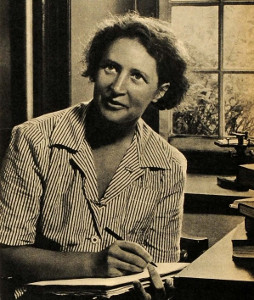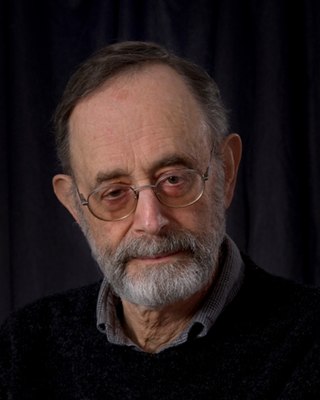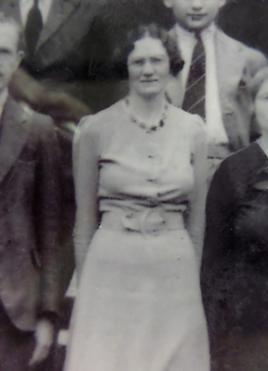Related Research Articles
Aesthetics is the branch of philosophy concerned with the nature of beauty and the nature of taste; and functions as the philosophy of art. Aesthetics examines the philosophy of aesthetic value, which is determined by critical judgements of artistic taste; thus, the function of aesthetics is the "critical reflection on art, culture and nature".
In art history, formalism is the study of art by analyzing and comparing form and style. Its discussion also includes the way objects are made and their purely visual or material aspects. In painting, formalism emphasizes compositional elements such as color, line, shape, texture, and other perceptual aspects rather than content, meaning, or the historical and social context. At its extreme, formalism in art history posits that everything necessary to comprehending a work of art is contained within the work of art. The context of the work, including the reason for its creation, the historical background, and the life of the artist, that is, its conceptual aspect is considered to be external to the artistic medium itself, and therefore of secondary importance.

Gregory Paul Currie FAHA is a British philosopher and academic, known for his work on philosophical aesthetics and the philosophy of mind. Currie is Professor of Philosophy at the University of York and Executive Editor of Mind & Language.
This is an alphabetical index of articles about aesthetics.

Anthropology of art is a sub-field in social anthropology dedicated to the study of art in different cultural contexts. The anthropology of art focuses on historical, economic and aesthetic dimensions in non-Western art forms, including what is known as 'tribal art'.
Garry L. Hagberg is an author, professor, philosopher, and jazz musician, He is currently the James H. Ottaway Jr. Professor of Philosophy and Aesthetics at Bard College.
Darwinian literary studies is a branch of literary criticism that studies literature in the context of evolution by means of natural selection, including gene-culture coevolution. It represents an emerging trend of neo-Darwinian thought in intellectual disciplines beyond those traditionally considered as evolutionary biology: evolutionary psychology, evolutionary anthropology, behavioral ecology, evolutionary developmental psychology, cognitive psychology, affective neuroscience, behavioural genetics, evolutionary epistemology, and other such disciplines.
Richard Shusterman is an American pragmatist philosopher. Known for his contributions to philosophical aesthetics and the emerging field of somaesthetics, currently he is the Dorothy F. Schmidt Eminent Scholar in the Humanities and Professor of Philosophy at Florida Atlantic University.
Jerrold Levinson is distinguished university professor of philosophy at the University of Maryland, College Park. He is particularly noted for his work on defining art, the aesthetics of music, ontology of art, philosophy of film, interpretation, aesthetics experience, and humour.
Elisabeth Schellekens is a Swedish philosopher and Chair Professor of Aesthetics at Uppsala University. Previously, she was Senior Lecturer at Durham University (2006-2014). Schellekens is known for her works in aesthetics. Her research interests include aesthetic cognitivism and objectivism, aesthetic normativity, Hume, Kant, aesthetic and moral properties, conceptual art, non-perceptual or intelligible aesthetic value, the relations between perception and knowledge, the aesthetics and ethics of cultural heritage, and the interaction between aesthetic, moral, cognitive and historical value in art.

Susanne Katherina Langer was an American philosopher, writer, and educator known for her theories on the influences of art on the mind. She was one of the earliest American women to achieve an academic career in philosophy and the first woman to be professionally recognized as an American philosopher. Langer is best remembered for her 1942 book Philosophy in a New Key which was followed by a sequel Feeling and Form: A Theory of Art in 1953. In 1960, Langer was elected a Fellow of the American Academy of Arts and Sciences.
Yuriko Saito is a retired Japanese-American philosopher specializing in aesthetics, including wabi-sabi, the Japanese philosophy of appreciating transience and imperfection. She is a professor emeritus of philosophy at the Rhode Island School of Design (RISD).

Ananta Charan Sukla was an Indian scholar of comparative literature, literary criticism, aesthetics, philosophy, and art history. He was the Founding Editor of Journal of Comparative Literature and Aesthetics and edited and published the journal for over 40 years. He specialized in comparative aesthetics, literary theory, philosophy of art, philosophy of literature, religion, mythology, and cultural studies. He was a professor of English and Comparative Literature at Sambalpur University, Sambalpur, Odisha.

Arnold Jerome Berleant is an American scholar and author who is active in both philosophy and music.
Evolutionary aesthetics refers to evolutionary psychology theories in which the basic aesthetic preferences of Homo sapiens are argued to have evolved in order to enhance survival and reproductive success.
Everyday Aesthetics is a recent subfield of philosophical aesthetics focusing on everyday events, settings and activities in which the faculty of sensibility is saliently at stake. Alexander Baumgarten established Aesthetics as a discipline and defined it as scientia cognitionis sensitivae, the science of sensory knowledge, in his foundational work Aesthetica (1750). This field has been dedicated since then to the clarification of fine arts, beauty and taste only marginally referring to the aesthetics in design, crafts, urban environments and social practice until the emergence of everyday aesthetics during the ‘90s. As other subfields like environmental aesthetics or the aesthetics of nature, everyday aesthetics also attempts to countervail aesthetics' almost exclusive focus on the philosophy of art.

(Elsie) Helen Knight was a British philosopher. She was one of few women active in the early days of analytic aesthetics.
Katharine Everett Gilbert (1886–1952), an American philosopher who studied aesthetics, was one of the first women to be president of the American Philosophical Society. She was also the first female professor at Duke University and, during her lifetime, the only female chairman of a liberal arts department.

Rahid Ulusel is an Azerbaijani scientist, senior researcher at the Azerbaijan National Academy of Sciences, and professor at Western University (2005-2007).
Jenefer Mary Robinson is an American philosopher, author and emerita professor of philosophy at the University of Cincinnati. She writes on aesthetics, philosophy of psychology, philosophy of mind and theory of emotions. She has published two monographs, one edited collection, and numerous peer reviewed articles. She is on the editorial Board for the Journal of Aesthetics and Art Criticism and was on the editorial board for Notre Dame Philosophical Reviews. She was president of the American Society of Aesthetics from 2009 until 2013. In 2007 she was a Leverhulme visiting professor of philosophy at the University of Nottingham and in 2006 she received a Rieveschl Award for Scholarly and/or Creative Works. She received the National Endowment for the Humanities Fellowship in September 2002. She was interviewed by Hans Maes for his book Conversations on Art and Aesthetics, which also contains her portrait by American photographer Steve Pyke. Debates in Aesthetics, an open access journal published by the British Society of Aesthetics, dedicated Vol. 14 No. 1 to her work.
References
- ↑ From the preface to 1995's edition of her 1992 Homo Aestheticus:"At first glance, the fact that the arts and related aesthetic attitudes vary so widely from one society to another would seem to suggest that they are wholly learned or "cultural" in origin rather than, as I will show, also biological or "natural". One can make an analogy with language: learning to speak is a universal, innate predisposition for all children even though individual children learn the particular language of the people among whom they are nurtured. Similarly, art can be regarded as a natural, general proclivity that manifests itself in culturally learned specifics such as dances, songs, performances, visual display, and poetic speech."
- ↑ Ellen Dissanayake, "University of Washington, School of Music, Affiliate Professor"
- ↑ Crain, Caleb (2001). "The Artistic Animal" (a profile of Ellen Dissanayake and her work), Lingua Franca, October, 2001. Online version retrieved November 27, 2007.
- ↑ "History of MICA's Honorary Degree Recipients". Maryland Institute College of Art (MICA). Retrieved 2019-01-04.
- ↑ Philosophy and Literature 18 (1994) also available here.